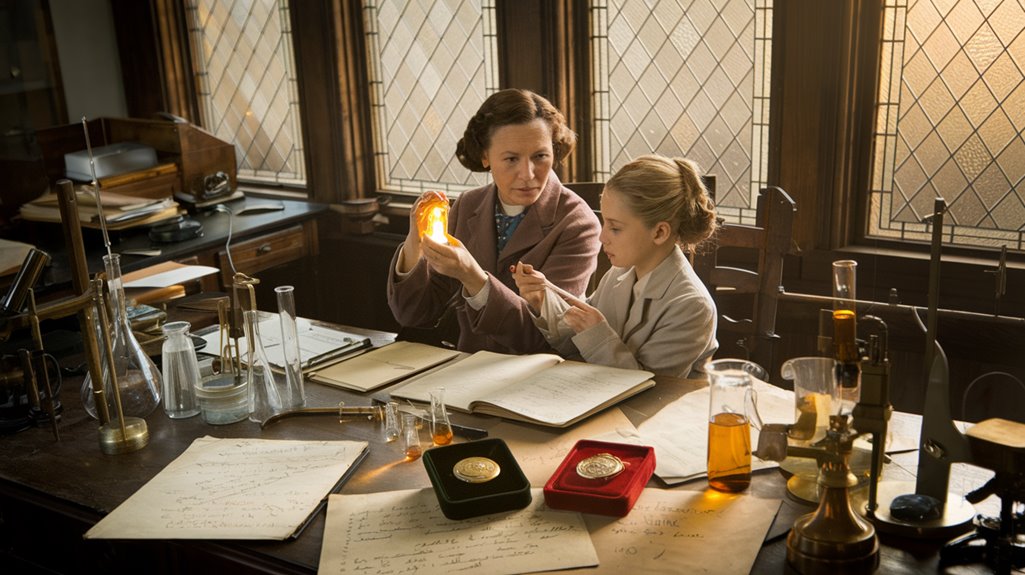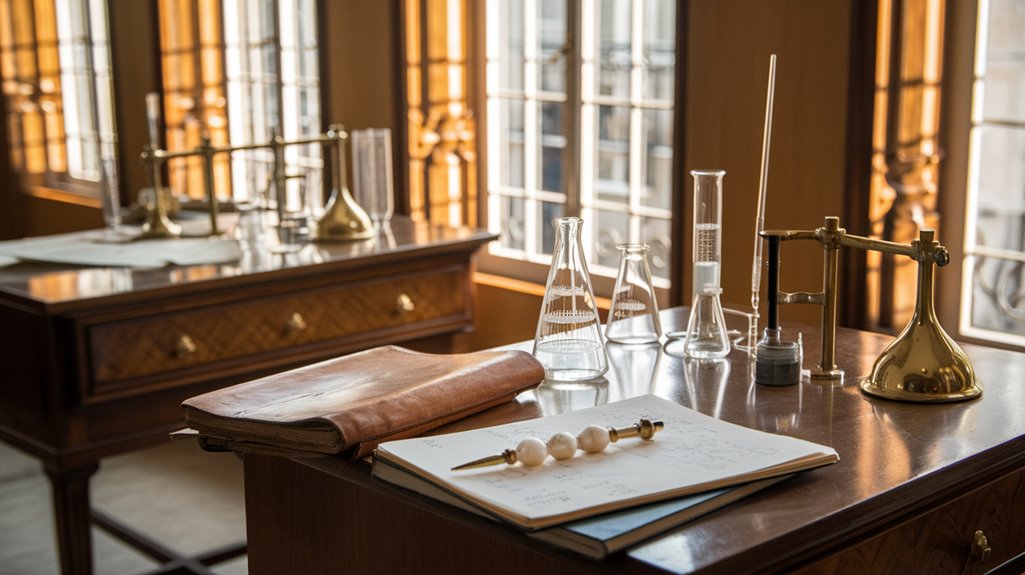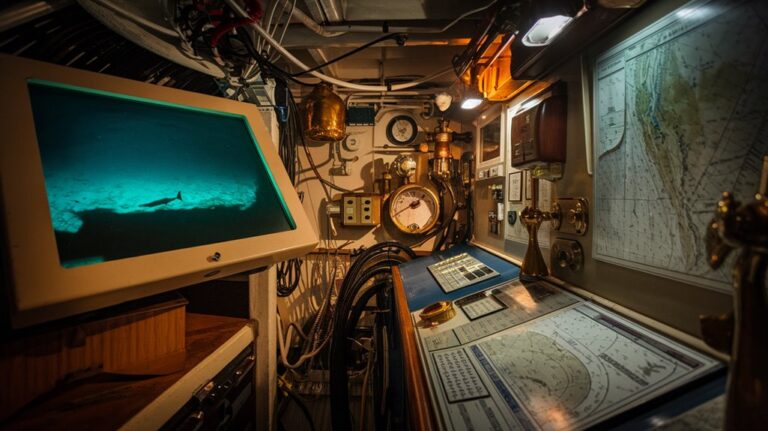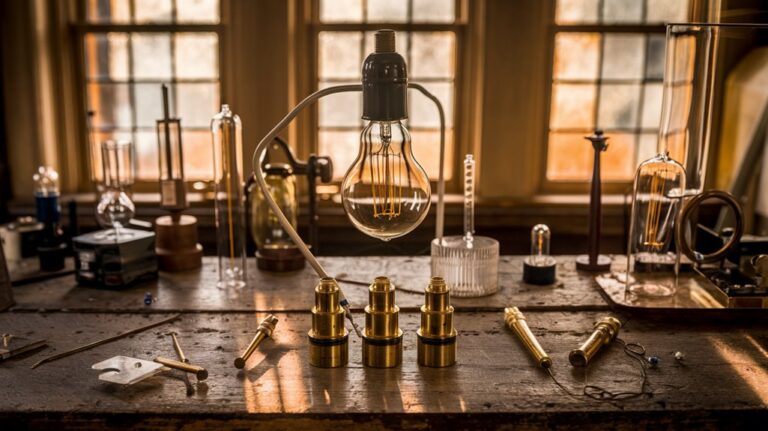Marie Curie’s Daughter Also Earned a Nobel Prize
You've probably heard of Marie Curie and her groundbreaking work with radioactivity, but did you know that scientific brilliance continued through her family line? Her daughter Irène Joliot-Curie wasn't content to simply live in her mother's shadow – she carved out her own remarkable path in chemistry and physics. This fascinating tale of intellectual inheritance, discovery, and determination reveals how two generations of women revolutionized our understanding of atomic science. Let's explore how the Curie legacy evolved through mother and daughter.
A Scientific Legacy Runs in the Family

When you look at the history of scientific achievement, no family has left quite the same mark as the Curies.
The Curie family's Nobel legacy stands unmatched, with an impressive total of five Nobel Prizes. It all began when Marie and Pierre Curie became the first couple to win Nobel Prizes in physics and chemistry. Marie went on to win a second Nobel Prize, making her achievements even more remarkable. The work that earned her this recognition involved isolating radium chloride from barium in 1902.
Following in her parents' footsteps, their daughter Irene Joliot-Curie, alongside her husband Frédéric, earned the 1935 Nobel Prize in Chemistry. This made Marie and Irene the only mother-daughter pair to achieve this prestigious honor. Their groundbreaking work led to the synthesis of radioactive elements, marking a significant advancement in chemistry.
The family's dedication to science didn't stop there – both of Irene's children, Hélène and Pierre, pursued scientific careers, continuing their remarkable family tradition.
Following Her Parents' Radioactive Footsteps
Like a torch passed between generations, Irène Joliot-Curie carried forward her parents' groundbreaking work in radioactivity.
Drawing from familial inspiration, she and her husband accessed Marie's polonium to conduct revolutionary radioactive research, leading to significant discoveries in nuclear physics. She began her formal studies at The Cooperative, a private educational initiative with prominent scholars.
You'll be amazed by their achievements:
- First to accurately calculate neutron mass in 1933
- Created radioactive isotopes through nuclear reactions
- Developed new theories about proton-to-neutron transformation
- Discovered artificial radioactivity in 1934
- Made radioactive materials more accessible for medical treatments
Their work earned them the 1935 Nobel Prize in Chemistry, extending the family's legacy of scientific excellence.
Following her mother's path, Irène later became director of the Radium Institute, where she continued to advance our understanding of nuclear physics and its applications. Her dedication to science persisted even as she battled acute leukemia likely caused by radiation exposure.
Groundbreaking Discoveries With Her Husband
Through their remarkable collaboration, Irène Joliot-Curie and her husband Frédéric made history by discovering artificial radioactivity in 1934. By bombarding aluminum with alpha particles in a cloud chamber, they observed a new type of radiation that transformed the aluminum into a radioactive form of phosphorus. This groundbreaking achievement earned them the 1935 Nobel Prize in Chemistry.
The discovery brought extraordinary recognition to their family, making the Curies the most Nobel laureates to date. You can trace modern nuclear medicine directly to their pioneering work, as their discovery led to the creation of radioactive elements for cancer diagnosis and treatment.
Their research opened doors to producing "designer" radioactive elements, expanding both theoretical knowledge and practical applications. Like her mother Marie, Irène made significant contributions that advanced the understanding of radioactivity. The couple's work went far beyond their initial discovery, setting the foundation for atomic physics and inspiring generations of scientists to push the boundaries of nuclear research.
Beyond the Laboratory: Government and Research Leadership
Building on her scientific achievements, Irène Joliot-Curie expanded her influence into government and research leadership roles.
Following in her mother's groundbreaking path, she became a pioneering figure at the Radium Institute in Paris.
She understood that effective leadership strategies required clear communication and cross-sector collaboration to secure research funding. You'll find her approach mirrored modern practices, where she balanced federal support with private sector partnerships. The approach aligns with today's model where business sector funds contribute 73% of American R&D investment.
- Secured substantial government funding for basic research initiatives
- Implemented transparent communication channels between researchers and policymakers
- Developed strategic partnerships with educational institutions
- Created frameworks for international scientific collaboration
- Established policies to maintain scientific integrity in research
Like today's research leaders, she recognized that impactful research required both laboratory excellence and administrative expertise.
Her leadership helped establish many of the funding structures and collaborative models that you'll still see in modern scientific institutions.
The Price of Scientific Progress
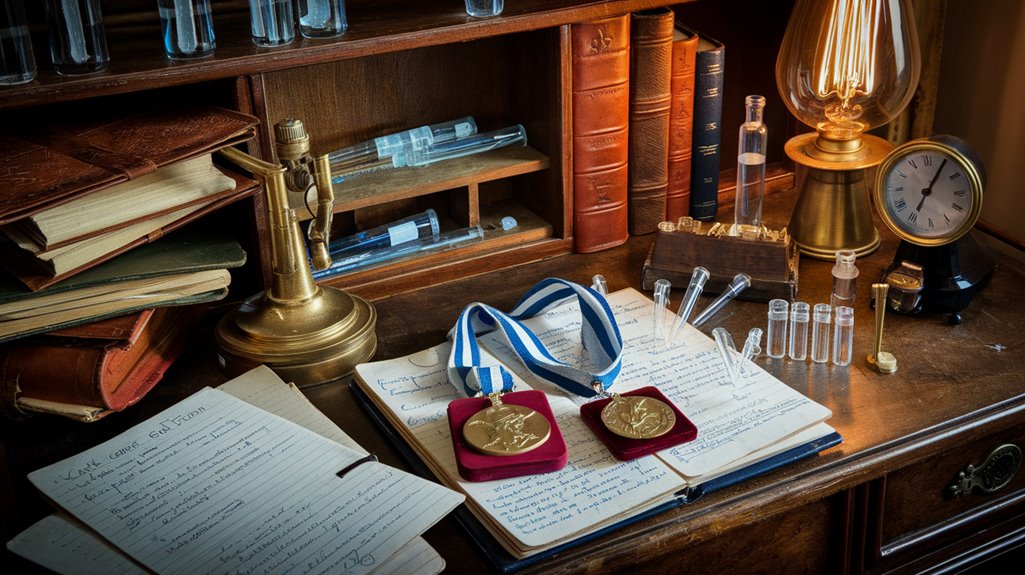
While the pursuit of scientific knowledge led to groundbreaking discoveries, it often carried devastating personal costs for pioneering researchers.
Her achievement of a Nobel Prize in Chemistry with her husband in 1935 came just a year after her mother's death.
You'll find no better example than Irène Joliot-Curie, who ultimately lost her life to leukemia caused by prolonged exposure to radioactive materials in her laboratory.
The ethical implications of her work raised significant questions about balancing scientific progress with human safety.
Though her research on artificial radioactivity revolutionized nuclear physics and medical treatments, the health consequences were severe.
Scientists didn't fully understand the dangers of radiation exposure at the time, leading to inadequate safety protocols.
Like her mother Marie Curie before her, Irène's dedication to science came at the ultimate price, highlighting the need for stricter safety measures in radioactive research.
Creating a Multi-Generational Impact
As generations of Curies pursued groundbreaking scientific work, they created an unparalleled legacy in the field of physics and chemistry. Their intergenerational influence extended far beyond their immediate family, creating a ripple effect that continues to inspire scientists worldwide. Irène Joliot-Curie's work with artificial radioactive elements earned her the 1935 Nobel Prize in Chemistry. Even before her groundbreaking discoveries, Irène learned from her mother who had isolated pure radium in 1906.
Through scientific mentorship and dedication to research, the Curies established a model for family-driven innovation that transformed our understanding of radioactivity and its applications.
- Five Nobel Prizes awarded within a single family
- Two groundbreaking mother-daughter scientists
- Establishment of influential radium institutes in France and Poland
- Continued scientific pursuits by Hélène and Pierre Joliot-Curie
- Integration of Curie discoveries into global education
You can see their impact in today's research institutions, medical treatments, and the growing number of women entering scientific fields, proving that knowledge truly transcends generations.

